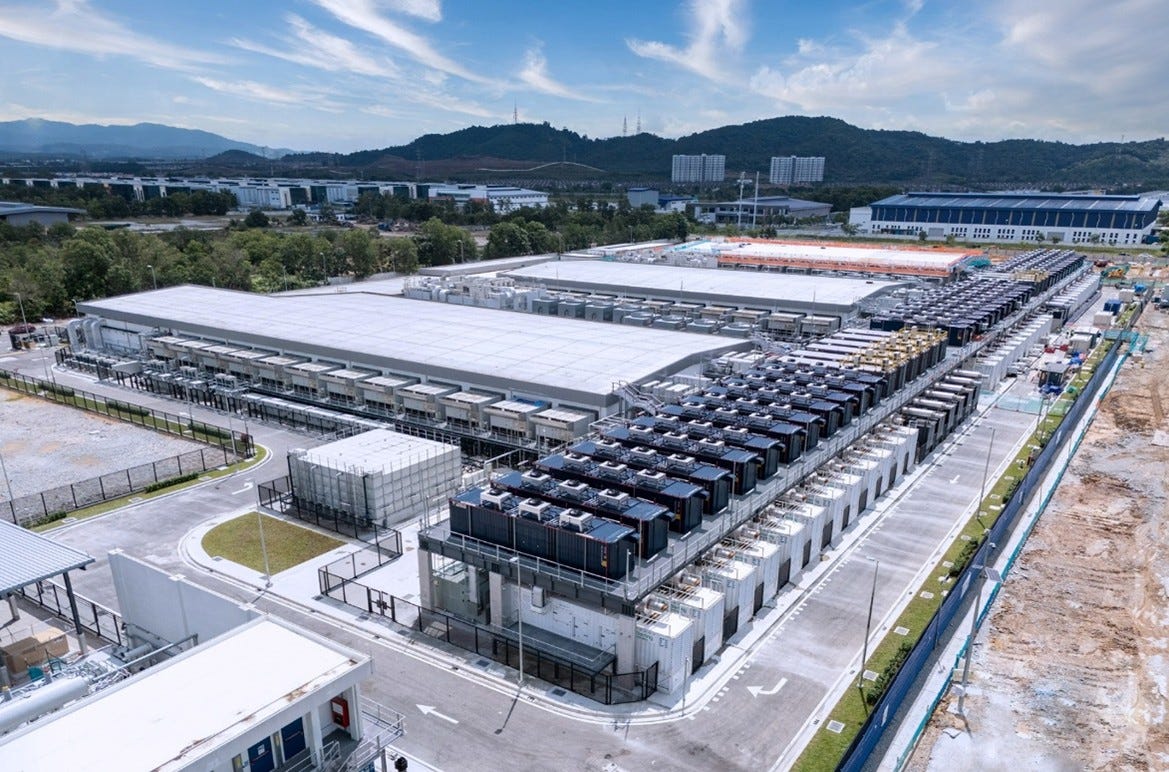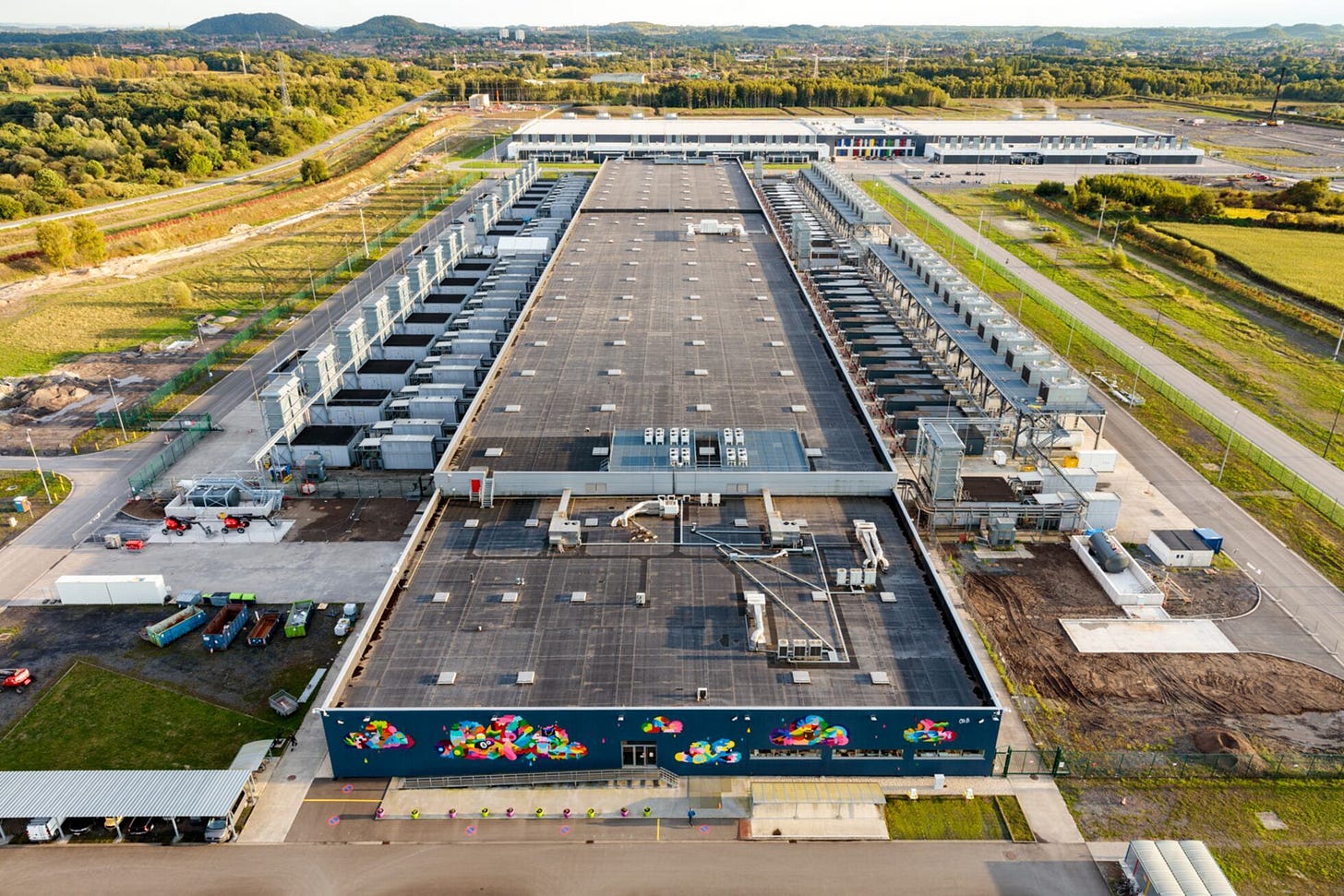AI Deepens the Global North-South Energy Gap
Southeast Asia may grasp a poisoned chalice
By: Tim Daiss
The global artificial intelligence (AI) movement, driven by the insatiable energy demands of data centers, risks entrenching the Global South in a fossil-fuel-dependent future. While developed nations invest in clean energy to power their technological progress, developing nations are being pushed toward a path that locks them into a cycle of climate-damaging energy sources.
Malaysia, Indonesia, Thailand, and Vietnam are all emerging as key markets, attracting significant investments in both co-location and hyperscale facilities. But nowhere is this more critical than Malaysia, which has placed data centers at the forefront of its economic strategy, attracting RM184.7 billion (US$43.6 billion) in investment over the past five years, according to a study by Fulcrum, a publication of the ISEAS-Yusof Ishak Institute at the University of Singapore.
Prime Minister Anwar Ibrahim has explicitly called for foreign data center investment in the fields of AI and data technology. Google and Microsoft have complied with massive investments. But a typical AI data center, according to the International Energy Agency (IEA), uses as much power as 100,000 households at present, while the largest centers currently being constructed will consume 20 times that amount. The computational power needed for sustaining AI’s growth is doubling roughly every 100 days.
It is thus of no surprise that data center energy consumption in Malaysia is projected to surge to over 5,000 MW by 2035 – 40 percent of Peninsular Malaysia’s present power capacity, or 11.1 percent of projected power capacity in 2035. At the moment, there appears no concrete plan to deal with this enormous expansion, according to the Fulcrum study.
Just as with past societal and technological advances – from the advent of electricity to global finance and developments in deep-tech – AI will create winners and losers. And just as before, the winners and losers will be divided between the Global North and the Global South.
The biggest divide will be how these two halves of the world fuel AI's rapid energy appetite. And make no mistake, that appetite will only continue to grow. A recent International Energy Agency (IEA) report found that electricity consumption from data centers – the facilities that power AI – amounted to around 415 terawatt hours (TWh), or about 1.5 percent of global electricity consumption, in 2024. That's a significant growth of some 12 percent per year over the last five years.
That energy consumption is projected to double to around 945 TWh by 2030 in the IEA’s Base Case, representing around 3 percent of total global electricity consumption in 2030. A 3 percent share may seem no reason for alarm, but these numbers can be deceiving. The US, China, and Europe are projected to remain the largest regions for data center electricity demand. However, other regions, still considered “developing,” are experiencing strong data center growth. A notable example is Southeast Asia, where electricity demand from data centers is projected to more than double by 2030.
And what they don’t produce are jobs. While data centers do create hundreds of jobs during construction, most facilities offer far fewer long-term jobs than people might expect. Once operational, they are highly automated and require only a small team for maintenance, monitoring, and management.
While the US and Europe will largely derive data center electricity from renewable energy and nuclear power, India, parts of China, and Southeast Asia will fuel a large part of their demand center growth with both coal and natural gas. According to the IEA data, renewables and nuclear power in Europe are set to meet around 85 percent of the additional electricity required to drive data centers by 2030. Japan and South Korea, together making up around 5 percent of global data center electricity demand, will see renewables and nuclear power meet 60 percent of their collective demand.
The problem is further exacerbated for Southeast Asia as it seems unable to break away from the machinations of Global North natural gas suppliers. Much of that narrative has been promulgated by Japan, the world’s largest liquefied natural gas (LNG) importer and a major reseller of the fuel in addition to being a large LNG infrastructure funder in the region.
Added to the mix are a plethora of western oil and gas majors, including UK-based Shell, California-based Chevron, France’s TotalEnergies, Italy’s Eni, Australian gas giant Woodside Petroleum and others, pushing the natural gas narrative even more. In the last few months, the Trump Administration has joined the group as it pushes LNG deals with its Asian trading partners to ward off pending tariff hikes.
However, gas as the ideal transition fuel to more renewable energy and sustainability is increasingly being labeled as a false climate change mitigation narrative – and for good reason. When used for power sector generation, gas emits around 50 percent of the emissions as coal, the world’s dirtiest burning fossil fuel.
Even more significantly, methane leakage from gas is an additional climate problem. Over a 100-year timescale, methane has 28 times greater global warming potential than carbon dioxide (CO₂) and is 84 times more potent on a 20-year timescale, according to climate scientists.
Methane leakage concerns led to the formation of the Global Methane Pledge (GMP), a voluntary commitment by participating countries to reduce global anthropogenic methane emissions by at least 30 percent from 2020 levels by 2030. Launched at COP26 by the EU and the US, the GMP has more than 155 government participants representing over 50 percent of global methane emissions.
Complicating matters, energy majors have recently started pouring money into gas exploration and production in Malaysia and Indonesia to meet rising power demand from data centers in the region, Reuters reported in June. These companies are pivoting back to more profitable conventional fuels, and Southeast Asian governments are keen to oblige, as they seek more affordable gas supplies.
This rapid development in Malaysia has led to significant pushback from organizations concerned about sustainability. The main issues highlighted in news reports and forums revolve around the strain on public utilities and environmental resources.
“We should ensure that the [citizens’] need for energy and water must be met before they are promised to data centers,” said Wendy Tang, a representative of the Green Building Index (GBI) “It is also important that subsidies in energy and water are channeled to the people and not to industries such as data centers. If a business requires subsidies from us to be profitable, it is not a viable one to have in Malaysia.”


